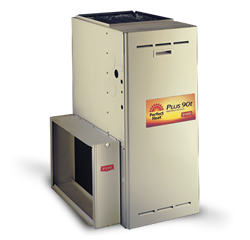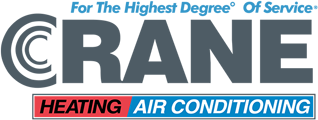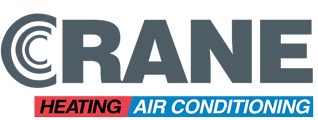Heating & Cooling 101
Heating and cooling are 2 of the most important concepts of home ownership. In fact, heating and cooling systems are major factors for those looking to purchase homes, and are a critical part of living comfortably in a home.
You may frequently hear the term “HVAC,” which is used to describe home heating and cooling systems. The acronym stands for Heating, Ventilation and Air Conditioning which are the 3 primary functions of a home system. They control air temperature and humidity, and maintain the quality of the air in the home.
Central Systems
Heating and cooling systems may be classified as central or local. Central heating and cooling is the most standard method, and is defined by a system that produces warmth or cool in 1 central area and then distributes it throughout the home. There are many types of systems that work as central systems, from traditional split systems to packaged product systems.
Products typically used in central heating and cooling systems include:
- Heat Pumps
- Air Conditioners
- Gas and Oil Furnaces
- Fan Coils
- Evaporator Coils
- Controls and Thermostats
Local heating and cooling, on the other hand, produces heat at the location where it is needed and serves small spaces. Room air conditioners and Packaged Terminal Air Conditioners (PTAC) are examples of local heating and cooling.
Heating
Heating systems keep your home warm and comfortable. If you live in a particularly cold climate, the function of your heating system is a high priority.
Most central heating and cooling systems are classified as forced air systems, because they send air through ductwork for distribution. The ductwork can contain products that filter or clean the air.
Radiant systems create heat and deliver it components such as radiators that radiate the heat into the home. Boilers are a traditional radiant heat source.
Typical heating products include:
- Heat Pumps
- Gas and Oil Furnaces
- Fan Coils
- Boilers


Cooling
Whole-home air conditioning systems are central systems that rely on ducts to deliver cooled air throughout the home. An air-conditioning system provides cooling, ventilation, humidity control and even heating (if using a Heat Pump) for a home. Air conditioning units cool refrigerants like Puron® Refrigerant and Freon and deliver them to evaporator coils, which dissipate the refrigerant and blow it into ducts for delivery throughout the home.
Products such as room air conditioners are local cooling options for smaller areas within homes. Instead of delivering cooled refrigerant to a coil and then to ductwork, a room air conditioner contains all the components in a single unit and blows air directly into a room.
Air-conditioned homes often have sealed windows, because open windows would disrupt the attempts of the control system to maintain constant temperature.
Typical air conditioning products include:
- Heat Pumps
- Central Air Conditioners
- Evaporator Coils
- Room Air Conditioners
Thermostats
The term “thermostat” commonly refers to any unit that controls the operation of a heating and cooling system. Thermostats are used to turn on heating or cooling systems to bring the home to a set temperature. In addition to basic temperature control, programmable thermostats can be used to manage the timing of the system’s functions, which can control overall energy use and costs.
Learn more about the many aspects of heating and cooling, including the types of systems available, how to find the ideal system for your home, how health and air quality impact your home, how energy efficiency can save you money, how heating and cooling impacts the environment, and the many terms and phrases of heating and cooling.

